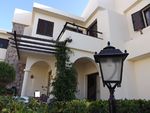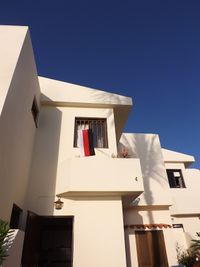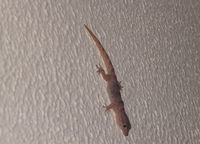Heischierland
Heischierland | |
|---|---|
Crown Dependency of Austenasia | |
 | |
| Established | 17 July 2014 |
| Government | |
| • Governing Commissioner | Lord Charles C., Duke of Grantabridge |
| • Lord Lieutenant | Maureen C. |
| Area | |
| • Total | 0 km2 (0 sq mi) |
| Population | |
| • Total | 0 |
| Although Heischierland has no permanent residents, it is frequently used as a holiday destination by the friends and relatives of the Governing Commissioner and the Lord Lieutenant, among others. | |
| Time zone | UTC |
| • Summer (DST) | UTC+1 (BST) |
Heischierland was a Crown Dependency of the Empire of Austenasia situated in the Canary Islands. Located on the island of Gran Canaria, it was composed of a villa. Heischierland was established on 17 July 2014 after an Act of Parliament was passed several days beforehand permitting it to be annexed by a colonial expedition.
Etymology
The Anglo-Saxon name for Heischierland (linguistically pure Anglo-Saxon language having been an official language of Heischierland) is ᛋᚳᛁᚱᛚᚪᚾᛞ (transliteration: Scīrland), which is a combination of ᛋᚳᛁᚱ (scīr), meaning "bright", and ᛚᚪᚾᛞ (land), meaning "land". Hence, ᛋᚳᛁᚱᛚᚪᚾᛞ means "bright land", which is true, as it is very sunny in Heischierland. The literal German translation (German being another official language of Heischierland) of ᛋᚳᛁᚱᛚᚪᚾᛞ would be Schierland (schier + land), but the actual German translation is Heischierland, which is schierland with Hei- at the beginning, the Hei- representing the German word heiß, meaning "hot". Hence, Heischierland means "hot, bright land", which is true of Heischierland. English, a third official language of Heischierland, uses the German translation of the Anglo-Saxon name. Heischierland was named by the person considered its founder, Lord Charles C., Duke of Grantabridge.
History
Heischierland was originally established as a micronational territory in 2011 as "Monte Solana Catorce", a territory of Lord Charles C.'s Domanglian Empire (three other Austenasian territories have also been Domanglian territory - Lichtenstein, Glencoe and Dekker). When the Federal Republic of Domanglia was established in the place of the Domanglian Empire on Halloween 2011 Monte Solana Catorce was disestablished as a Domanglian colony in the process and once again became a part of Juan Carlos I's Kingdom of Spain (as it had been prior to Domanglian Imperial annexation). The former Monte Solana Catorce remained Spanish through the last years of Juan Carlos I's reign and into the reign of his son, Felipe VI. On 30 June 2014, eleven days after the beginning of this reign, the Heischierland and Oregonia Act 2014 was granted Imperial Consent by the Emperor of Austenasia, Jonathan I. This Act gave Lord Charles C. the power to re-establish Monte Solana Catorce as a Crown Dependency of Austenasia called Heischierland with himself as Governing Commissioner. So, on 16 July 2014 Lord C. and fellow Lichtensteiners, as well as his non-Austenasian grandmother, set off on an Austenasian colonial expedition to soon-to-be-Heischierland. They arrived by 17 July 2014, and once the territory was fully colonised Lord C. did what the Heischierland and Oregonia Act 2014 gave him power to do, with consent and by request of one of the owners of the property of Heischierland (Lord C.'s mother), in the form of a Declaration of Dependence, becoming the Governing Commissioner of Heischierland in the process. Later on 17 July, Lord C., as Governing Commissioner on behalf of the Emperor, signed the First Post-Declaration Decree - a decree which made the British English variety of English, German, and linguistically pure Anglo-Saxon the three official languages of Heischierland, made God Save the Emperor and Heischierland is Faithful the two anthems of Heischierland, made Heischierland have its two colonial flags, and made Lord C.'s non-Austenasian grandmother the first Lord Lieutenant of Heischierland with the style of "The Right Honourable", establishing the said position. On 31 July 2014 the Lichtensteiners, including Lord C., returned to their native Austenasian Town of Lichtenstein, leaving the Lord Lieutenant behind in Heischierland. The Lord Lieutenant left Heischierland to return to England on 17 August that year. On 21 September 2014 Governing Commissioner Lord Charles C. signed and decreed his Second Post-Declaration Decree in Lichtenstein. This decree, among other things (such as making being a member of Heischierland and saying "I love the European Union" verbally in English without sarcasm within the territory of Heischierland punishable by corporal punishment), made Vera Hewitt the Knight of the Splendid Analogy (KSA) as a reward for a splendid analogy she made which included Nigel Farage, and made Kuri Kabanov the Baron Kabanov. The physical flag of Heischierland and the two Post-Declaration Decrees were part of the Flag Exhibition and the Governmental Exhibition respectively in Lichtenstein's Imperial Museum. In June 2015 the Lord Lieutenant returned to Heischierland. In July 2015 Lord C. and his fellow Lichtensteiners returned to Heischierland, and over a week after that the Lord Lieutenant returned to England. The Lichtensteiners then spent approximately an extra week and three days as inhabitants of Heischierland before they returned to Lichtenstein. On 23 September 2016 Heischierland was ceded back to the Kingdom of Spain. Two years later, on 23 September 2018, Monte Solana Catorce came full circle as it was re-established as a Domanglian territory.
Politics
On behalf of and in the name of the Emperor of Austenasia in his right as Monarch of Heischierland, Heischierland was formally ruled by decree by a, subsequently viceregal, Governing Commissioner. The only Governing Commissioner was the founder of the Crown Dependency, Lord Charles Clarke, Duke of Grantabridge.
Since the First Post-Declaration Decree was signed on 17 July 2014 the Governing Commissioner had a deputy known as the Lord Lieutenant of Heischierland. The Lord Lieutenant was responsible for much of the non-legislative governance of Heischierland, and was in office at the pleasure of the Governing Commissioner, or until death. The Lord Lieutenant had the style of "The Right Honourable". There was only one Lord Lieutenant - The Right Hon. Maureen C., grandmother of the Governing Commissioner.
As a Crown Dependency, Heischierland was not a part of Austenasia proper, so had no representation in the Parliament of Austenasia and no Austenasian Parliamentary legislation applied to Heischierland as long as the legislation did not explicitly refer to it.
Culture
Language
As stated previously, the three official languages of Heischierland were British English English, German and linguistically pure Anglo-Saxon. The latter were cultural and ceremonial languages of Heischierland, while the former was the most commonly used, functional language of Heischierland. Other Germanic languages, such as Danish, and the Romance language Castilian, could be heard in Heischierland coming from surrounding Spanish areas.
Flags
All of Heischierland's flags were designed by Lord Charles C., Duke of Grantabridge.

-
Flag of Monte Solana Catorce. Based upon the flag of Gran Canaria and the Domanglian Empire's "Liberty Keys Flag".
-
One of the two official colonial flags of Heischierland. Ultimately based upon post-Monte Solana Catorce Domanglian flags.
-
One of the two official colonial flags of Heischierland. Ultimately based upon post-Monte Solana Catorce Domanglian flags. The Austenasian Star is at its centre.
Anthems
The two anthems of Heischierland were God Save the Emperor (by Jonathan I while still a Crown Prince based upon work by Henry Carey, and an unknown composer/s), which is the national/imperial anthem of the Empire of Austenasia, and Heischierland is Faithful (by an anonymous composer and based upon work by Max Schneckenburger and Karl Wilhelm, with a few words by another unknown). Heischierland is Faithful is written in two of Heischierland's official languages, English and German, and it introduced a German poetic nickname for Austenasia, Austenland (which deviates from Austenasia's proper name in German, Austenasien). Heischierland is Faithful shares lyrics and a melody with Die Wacht am Rhein (hence the contributions by Max Schneckenburger and Karl Wilhelm). The anonymous composer of Heischierland is Faithful has been criticised for the anthem's bizarre surreal lyrics (apparently due to his poor understanding of German).
Wildlife

Geckoes, birds, moths, cockroaches and spiders all inhabit Heischierland at one point or another. Many of these creatures, such as a particular tiny bird, are continuous residents.




